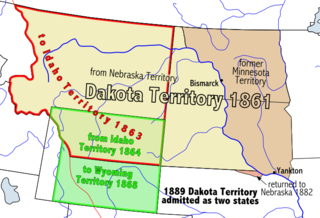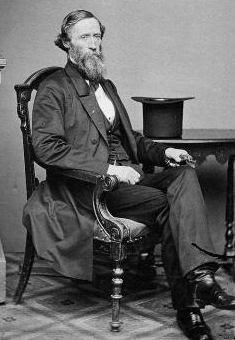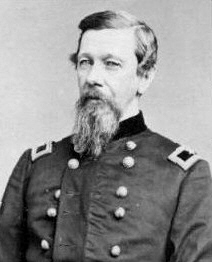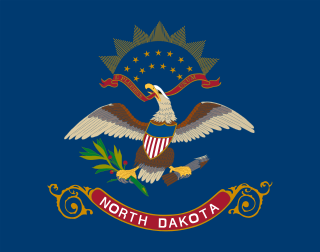Related Research Articles

Indian Territory and the Indian Territories are terms that generally described an evolving land area set aside by the United States government for the relocation of Native Americans who held original Indian title to their land as an independent nation-state. The concept of an Indian territory was an outcome of the U.S. federal government's 18th- and 19th-century policy of Indian removal. After the American Civil War (1861–1865), the policy of the U.S. government was one of assimilation.

Fort Snelling is a former military fortification and National Historic Landmark in the U.S. state of Minnesota on the bluffs overlooking the confluence of the Minnesota and Mississippi Rivers. The military site was initially named Fort Saint Anthony, but it was renamed Fort Snelling once its construction was completed in 1825.

Alonzo Jay Edgerton was a United States senator from Minnesota and a United States district judge of the United States District Court for the District of South Dakota.

The Territory of Dakota was an organized incorporated territory of the United States that existed from March 2, 1861, until November 2, 1889, when the final extent of the reduced territory was split and admitted to the Union as the states of North and South Dakota.

Oscar Sherman Gifford was an American lawyer of Canton, South Dakota. He served six years in the United States House of Representatives, first as the non-voting delegate from the Dakota Territory, then as a full member of the House from South Dakota.

The territory of the United States and its overseas possessions has evolved over time, from the colonial era to the present day. It includes formally organized territories, proposed and failed states, unrecognized breakaway states, international and interstate purchases, cessions, and land grants, and historical military departments and administrative districts. The last section lists informal regions from American vernacular geography known by popular nicknames and linked by geographical, cultural, or economic similarities, some of which are still in use today.

John Blair Smith Todd was a Delegate from Dakota Territory to the United States House of Representatives and a general in the Union Army during the American Civil War.

Philo Hall was a South Dakota attorney and politician. He served as Attorney General of South Dakota and a member of the United States House of Representatives.

Edwin Stanton McCook was an American soldier and politician. A Union Army officer during the American Civil War and a postbellum politician in the Dakota Territory, he was assassinated in office while serving as acting governor on September 11, 1873.

Alfred Sully was an American military officer who served in the United States Army during the Mexican-American War and the American Indian Wars. He served as Brevet Brigadier General in the Union army during the American Civil War but was removed from command by John Gibbon for failure to suppress a mutiny by the 34th New York Infantry Regiment. He was cleared by a court of inquiry of any wrongdoing and sent to command the District of Iowa in the Department of the Northwest during the Sioux Wars. After the Civil War, he served as major in the United States Army and continued to fight in the Indian Wars including the Nez Perce War and out of Fort Dodge, Fort Harker and Fort Vancouver. He served as Superintendent of Indian Affairs for Montana in 1869 and as colonel of the 21st Infantry Regiment in 1873.

The 8th Minnesota Infantry Regiment was a Minnesota USV infantry regiment that served in the Union Army during the American Indian Wars and the American Civil War.

The state of Iowa played a significant role during the American Civil War in providing food, supplies, troops and officers for the Union army.

The 3rd Minnesota Light Artillery Battery was a Minnesota USV artillery battery that served in the Union Army during the American Civil War and the American Indian Wars.

The Dakota War of 1862, also known as the Sioux Uprising, the Dakota Uprising, the Sioux Outbreak of 1862, the Dakota Conflict, or Little Crow's War, was an armed conflict between the United States and several eastern bands of Dakota collectively known as the Santee Sioux. It began on August 18, 1862, when the Dakota, who were facing starvation and displacement, attacked white settlements at the Lower Sioux Agency along the Minnesota River valley in southwest Minnesota. The war lasted for five weeks and resulted in the deaths of hundreds of settlers and the displacement of thousands more. In the aftermath, the Dakota people were exiled from their homelands, forcibly sent to reservations in the Dakotas and Nebraska, and the State of Minnesota confiscated and sold all their remaining land in the state. The war also ended with the largest mass execution in United States history with the hanging of 38 Dakota men.

The history of Idaho in the American Civil War is atypical, as the territory was far from the battlefields.

The area that eventually became the U.S. state of Montana played little direct role in the American Civil War. The closest the Confederate States Army ever came to the area was New Mexico and eastern Kansas, each over a thousand miles away. There was not even an organized territory using "Montana" until the Montana Territory was created on May 26, 1864, three years after the Battle of Fort Sumter. In 1861, the area was divided between the Dakota Territory and the Washington Territory, and in 1863, it was part of the Idaho Territory.
The 1st Dakota Cavalry was a Union battalion of two companies raised in the Dakota Territory during the American Civil War. They were deployed along the frontier, primarily to protect the settlers during the Dakota War of 1862.

The following outline is provided as an overview of and topical guide to the U.S. state of North Dakota:

The following outline is provided as an overview of and topical guide to South Dakota: